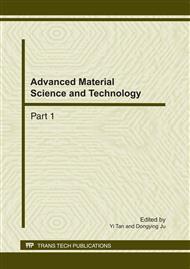p.119
p.123
p.127
p.131
p.135
p.139
p.143
p.147
p.151
Pozzolanic Activity of Ceramic Polishing Powder as Cementitious Material
Abstract:
The major industrial by-product largely generated in southern China is ceramic polishing powder (PP) produced from ceramic industries. In this paper, gross of silicon and aluminum dissolved from polishing powder and fly ash were studied by alkali dissolve experiments, pozzolanic activity of PP and fly ash were studied as well by determining chemical combined water and fast strength experiments. Results show that the cement mortar strength active index of PP is up to 82%. The average size of PP is 6.31 um; the fine granule of PP fills in the pore of mortars and improves the compressive strength of mortars. Microstructure of mortars added PP demonstrates that hydration gel is close-grained, dense and reticular. It reveals that “the granule domino effect” enhance the density of mortars added PP and conduce to the high compressive strength. Polishing powder can be used as cementitious material, especially the quality of early stage is higher than that of fly ash. Gross of vitreous phase is not the single factor to determine pozzolanic quality of polishing powder, ability of alive silicon and aluminum responding to Ca(OH)2 is one of the most important impact.
Info:
Periodical:
Pages:
135-138
Citation:
Online since:
February 2011
Authors:
Price:
Сopyright:
© 2011 Trans Tech Publications Ltd. All Rights Reserved
Share:
Citation:


